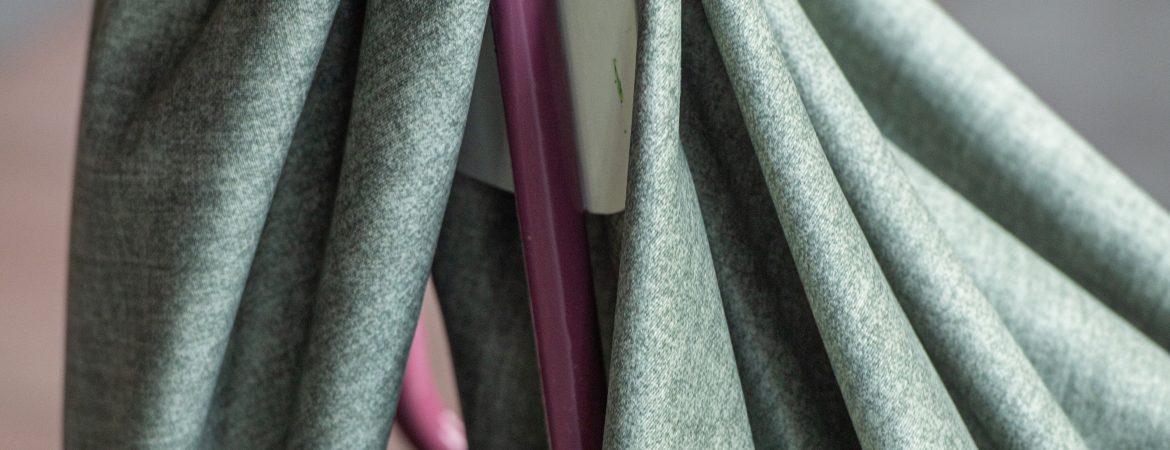
Recycling sustainable furniture in a circular economy
The demand for sustainable furniture is growing. Recycling fabrics is crucial to creating sustainable furniture. Even though the road to a circular economy is still long, it is crucial to be actively engaged in it. We have various reasons for this.
Textile recycling reduces waste
First and foremost, textile recycling contributes to reducing waste. Often, furniture fabrics are discarded when the furniture they belong to becomes worn out or goes out of fashion. By recycling textiles, the amount of waste is reduced, and the fabrics can be reused.
Resource savings
Another significant advantage of textile recycling is that it contributes to saving resources. Furniture fabric is often made from new resources such as cotton or polyester. By recycling these materials, new resources are saved, and less pressure is placed on natural resources.
Reduced emissions
Recycling furniture fabrics significantly reduces CO2-eq emissions and energy. Additionally, it saves a lot of water. The production of new furniture fabrics requires a lot of energy. Recycling helps limit greenhouse gas emissions.
Economic benefits of sustainable furniture
Finally, economic benefits can be achieved through recycling furniture fabrics. When resources are reused, waste is reduced. This contributes to a circular economy. It can lead to new jobs and economic growth in the sustainable production sector.
Improving and achieving furniture fabric recycling
Several solutions can improve and achieve the recycling of furniture fabrics. For instance, collaboration between the industry and government can establish better textile recycling infrastructure, such as developing better sorting and separation techniques and setting up recycling programs. Designers can also create products and furniture that are easier to disassemble and recycle, using modular components and separating different materials for recycling. This is also known as Ecodesign.
New technologies for sustainable furniture
Furthermore, new technologies are constantly being developed. For example, chemical recycling processes that enable the separation and recycling of multiple types of fibers. Also, increasing awareness among consumers and businesses can contribute to better furniture fabric recycling. By learning how products can be properly recycled and making more sustainable choices, consumers and businesses can contribute to a more sustainable furniture and circular economy.
Benefits of circular textiles
Circular products have several advantages over non-circular products. Firstly, circular products contribute to sustainability by reducing textile waste and preserving natural resources. Reusing materials and minimizing waste means fewer new resources need to be produced, reducing environmental impact.
Another benefit of circular products is cost savings. Reusing materials in circular products can lead to cost savings for companies and consumers, as fewer new materials need to be produced. This can contribute to more efficient and cost-effective production.
Benefits for retailers
Circularity is also important for retailers. By incorporating circular products into their assortment, they can establish a sustainable image. Firstly, it can contribute to a store’s sustainable image. More and more consumers are looking for sustainable products and want to contribute to a better environment. By offering circular products, the store can present itself as a sustainable business and build a positive image with customers.
Another advantage of circular products is cost savings. Because fewer new resources are needed, circular products are often cheaper to produce than new products.
Additionally, stores that offer circular products can attract new customer groups specifically looking for products for a sustainable interior. This can lead to a larger customer base and higher sales. Stores that embrace circular products early can also gain a competitive advantage over other stores that are not as advanced. This can contribute to a stronger market position and higher long-term profitability.
Rules regarding sustainable textiles
Rules regarding circular products depend on specific regions and legislation. In the EU, the European Green Deal, published in 2019, forms the basis for more ambitious climate policies. The Green Deal considers environmental protection and biodiversity. Additionally, there are various European legislative initiatives aimed at promoting the circular economy and reducing dependency on new resources. At the national level, there may also be rules and legislation that promote and incentivize circular products. For example, some countries offer tax benefits or financial incentives for companies that develop and produce circular products.
Overall, the rules and legislation regarding circular products focus on promoting sustainability, reducing waste, and preserving natural resources. Several recycling techniques have already been developed that contribute to a sustainable interior. However, recycling furniture fabrics is not always easy. You can read about it in the article ‘Recycling techniques for sustainable furniture‘.